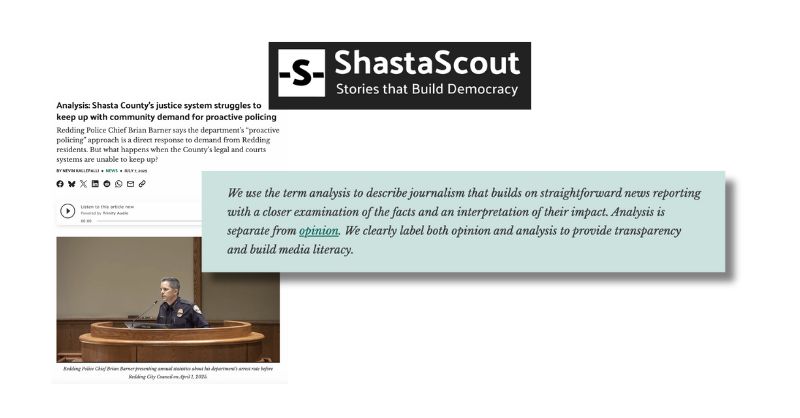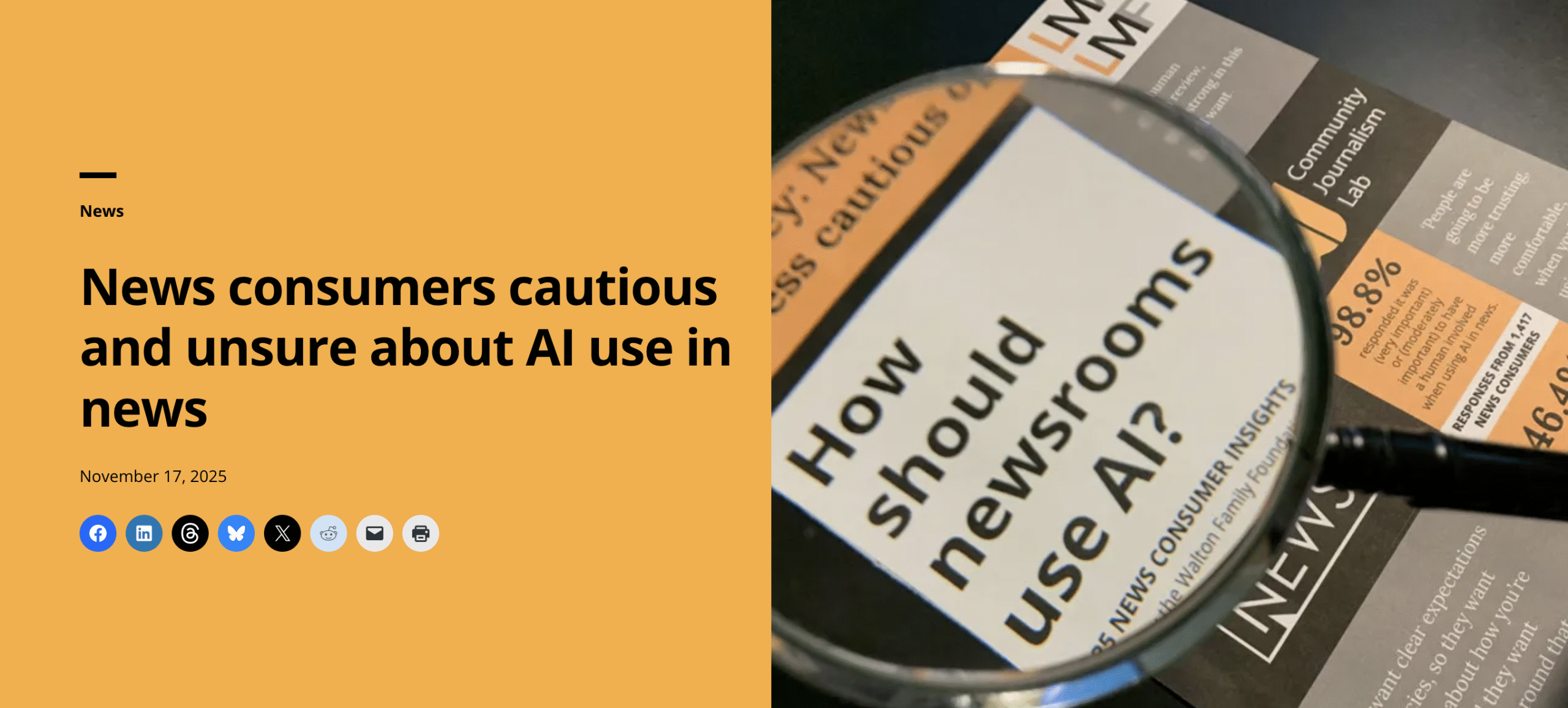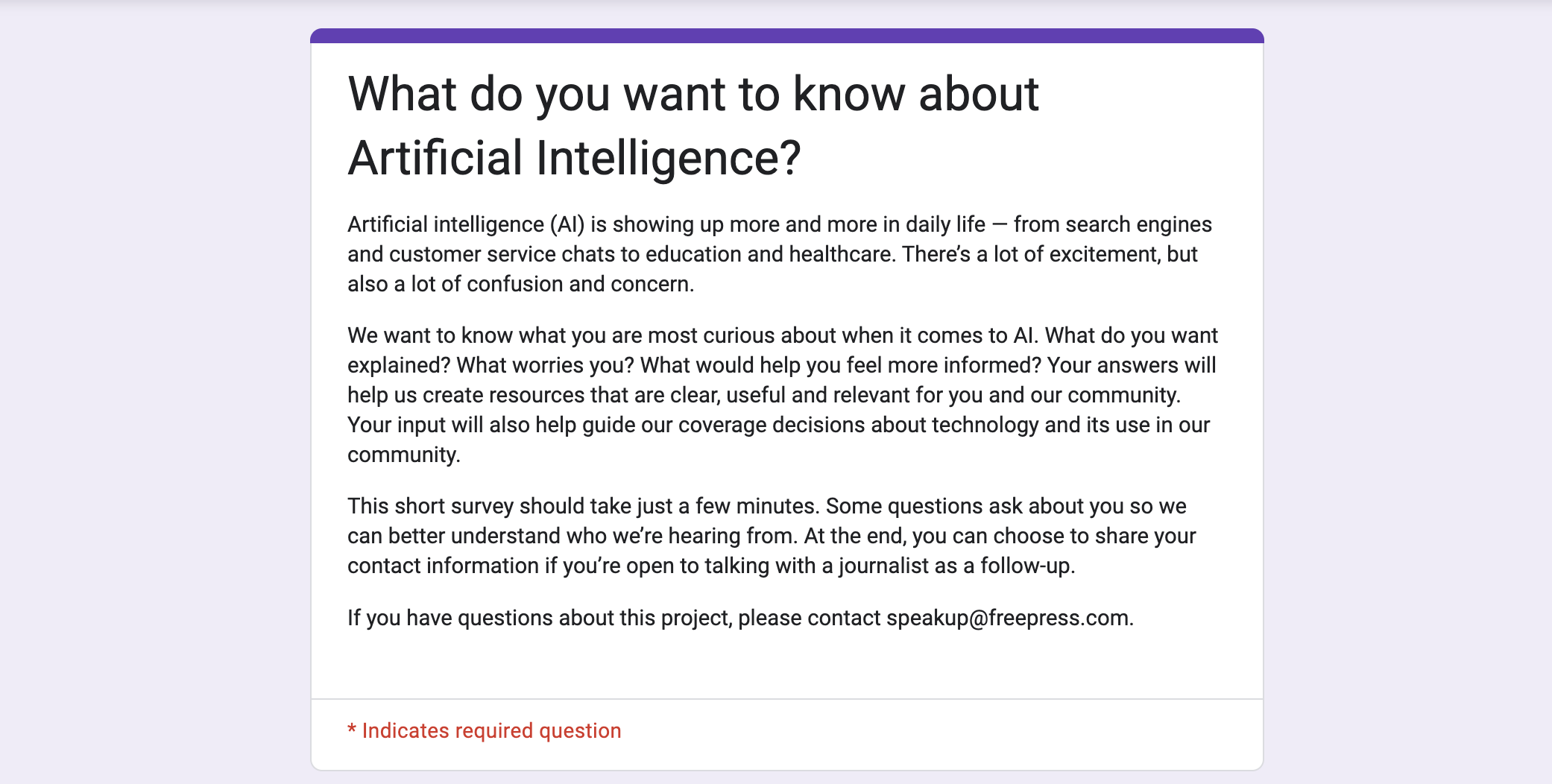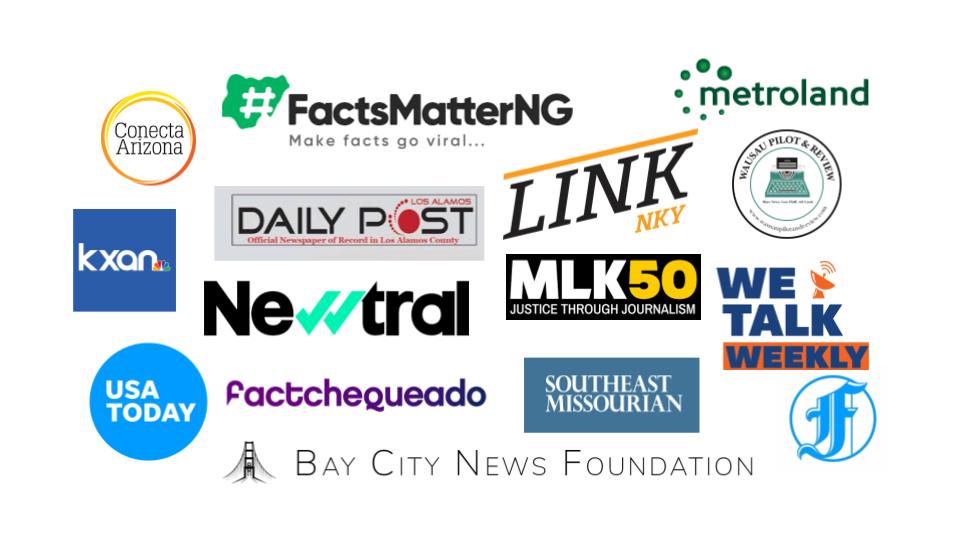
The latest research suggests listening and engagement are even more critical to building trust in journalists’ use of AI than we first learned.
Engage with your audience before, during and after you use AI
We’re excited to share we have new research about how audiences are responding to AI use in news. The findings from our new research have led to the development of new resources to help you build trust with your use of AI. (We’ve included a full list of those resources below, all of which you can find in our updated AI Trust Kit!
Over the next four weeks in this Trust Tips newsletter, we’ll be highlighting tips for how to build trust with your use of AI based on this new research.
A couple of research highlights before we dive into this week’s tip:
- The disclosure of AI use generally led to a decrease in trust in the specific news story. Survey respondents who reacted to AI use disclosures in real news stories that cohort newsrooms published were especially likely to express distrust. In A/B testing of similar disclosures, people elicited similar decreases in trust when seeing that AI was used; however, the type of AI use and how these uses were framed in real-world stories may influence the intensity of some reactions.
- Different news consumers respond to AI use disclosures differently. Respondents who already distrusted news media in general were more likely to report a negative impact on trust from AI use labels. Respondents who use AI more in their daily lives had a more positive response to newsroom AI use disclosures. Younger respondents (people under 35 years old) were more likely to report being “much less likely” to trust the story after seeing that AI was used (31% of respondents) compared to older age groups (20% for people 55 years or over).
- How an AI use disclosure is written matters. While we generally found disclosure around using AI tends to make audiences at least somewhat uncomfortable, if not downright distrusting, providing more information in the disclosure generally had a reassuring effect.
Why listening and engagement are a key first step
Listening and engagement are baked into almost everything our Trusting News team teaches journalists to do. There’s good reasons for that, including:
- We know it works.
- We believe journalists make more informed decisions about what it means to serve the public if they understand the people they aim to serve.
So, it’s probably not surprising the first recommendation coming out of our new AI audience research is focused on listening and engagement.
Background: When we first began working on helping journalists build trust with their use of AI, we recruited a cohort of newsrooms to use an audience survey to better understand how their audience felt about AI, its use in news and what they expected when journalists used the technology and tools. After analyzing thoughts from more than 6,000 news consumers, we recommend that journalists prioritize listening and engaging with their audience about AI and how they may use it.
While that advice may sound familiar, our latest research suggests listening and engagement are even more critical to building trust in journalists’ use of AI than we first learned. Here’s why.
News consumers’ views on AI use in news vary
When actual news consumers were asked how newsrooms should approach AI, we heard:
- 30% say newsrooms should never use AI “under any circumstances”
- 62% say they are open to some use of AI, but only if there are clear ethical guidelines and policies around its use.
The range of opinions we heard about how newsrooms should use AI shows how varied and personal people’s feelings are about this technology. There is no single “audience perspective,” only individuals with different levels of understanding, comfort and concern.
If you’re not actively listening to your community, you’re guessing. And if you assume most people are comfortable with AI use in your journalism, you risk overusing it or moving too fast. That can lead to confusion and skepticism, eroding the trust you’re trying to build.
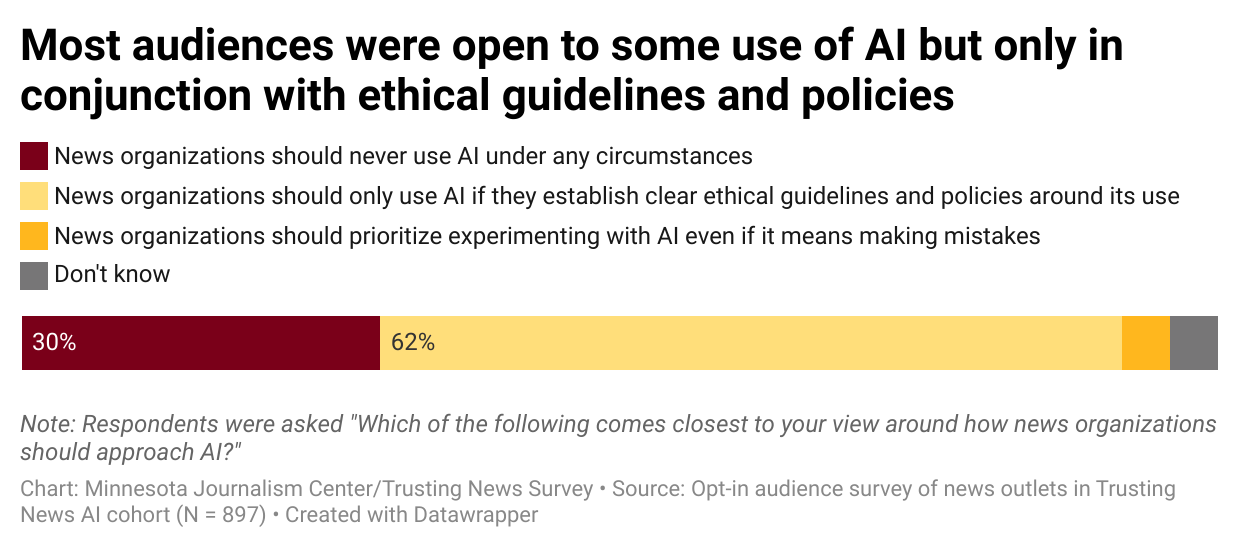
News consumers want more information in disclosures
When actual news consumers saw an AI use disclosure in a real news story, they almost always wanted more information. Specifically, people said they wanted more information about “how” and “why” AI was used, and wanted to know what “human oversight” there was when journalists used AI.
This is a clear signal that generic disclosures aren’t enough. Newsrooms need to engage directly with their audiences to understand what questions their news consumers have and what kind of transparency will actually build trust with them. Some newsrooms will have users who use AI more, others less. This varied use of and understanding of the technology should impact how newsrooms disclose AI use, with some newsrooms needing to provide more explanation and maybe others needing to provide less details.

People have strong feelings about AI — and those feelings carry over to AI use in news
People’s reaction to learning AI was used by journalists tended to be stronger than any reassurance provided by detailed disclosure language. People were more affected by knowing AI was used than they were reassured by explanations focused on why it was used, how it was used and if humans were involved to check for accuracy and ethics.
This makes listening even more essential. If you’re not hearing and addressing your audience’s concerns directly, even the most well-crafted and well-intentioned explanations may fall flat. Engagement helps you anticipate reactions and build trust before you lose it.
Newsrooms saw major differences among their news consumers
Maybe the biggest reason for us to recommend journalists listen and engage with their audience about their use of AI is because the responses we saw varied so widely from newsroom to newsroom. What built trust in one community raised concerns in another. For example:
- 58% of news consumers from one newsroom said they felt positively about AI use disclosures, while only 21% of news consumers from another newsroom said they felt positively.
- When news consumers were asked if there was enough information provided in the disclosure about “how” AI was used, three newsrooms overwhelmingly heard there was, with 85% or more of their news consumers telling them there was enough information provided. On the other hand, five newsrooms had 50% or more of their news consumers tell them there was NOT enough information about “how” AI was used.
The differences in news consumer responses shows the importance of understanding YOUR audience and their views on this topic.
Your turn! How to engage and listen
You should base your decisions about how to talk about your AI work on what will be helpful to the specific community you serve. What do they understand? What do they fear? What are they looking for?
To help newsrooms engage and listen to their audiences about AI, we have three tools:
- Survey: “Using Artificial Intelligence in our journalism.” Use this survey to understand how your news consumers feel about AI and its use in news. This is a good place to start if you’ve never asked your audience about your use of AI. The feedback you receive can help guide how you use AI and how you disclose that use of AI. Click here to make a copy of our survey for your own use.
- AI Community Interview Guide. To gather deeper insights into perceptions of AI use and understanding of the technology, newsrooms can conduct one-on-one interviews with community members. Find the full the guide here.
- Continually invite feedback. This is a quickly evolving landscape. We should expect both newsroom technology use and public perceptions to continually shift. One way to invite ongoing feedback is to use an in-story survey. This can be done by linking out to a survey on another page or by embedding a survey within or underneath a story. To help you regularly ask for feedback, we have suggested language and sample questions in this Trusting News AI Resource: Use these questions to see what your news consumers think about AI.
Here’s an example of what inviting feedback can look like in an AI use disclosure from Verified News Network:
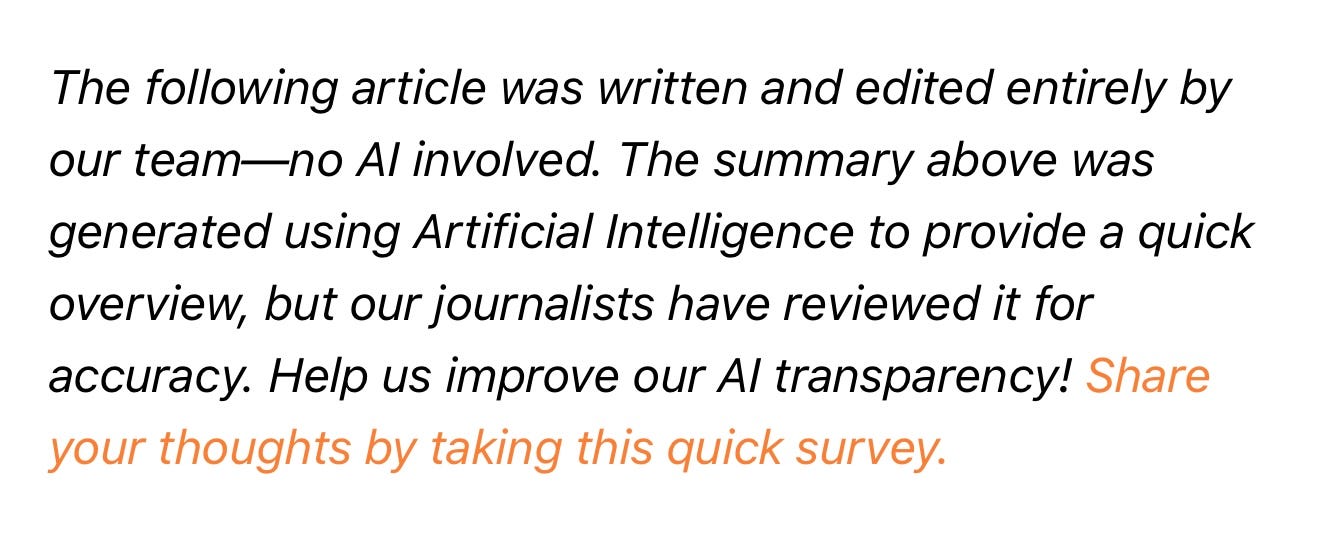
Resources to help you build trust with your use of AI
As a result of this research, we have NEW resources and tools to make this work easier. All of them can be found in the AI Trust Kit and below:
- Resources to help you listen. A survey to learn how your community feels about AI and your use of it. A community interview guide to dive deeper into those feelings. Questions to ask to get regular community feedback on your use of AI.
- Resources to help you be transparent. A worksheet to create an AI use policy. A worksheet to create in-story AI use disclosures. Sample language to copy/paste into AI use disclosures and policies. Newsroom examples of AI policies, AI use disclosures and other AI transparency initiatives.
- Resources to help you be ethical. A resource to help spot and disclose AI in content you don’t control. A guide to help you understand how audiences feel about AI use cases in news. A collection of research to help you understand how the public feels about AI.
Apply: NEW AI cohort focused on AI education
We are looking for newsrooms who want to experiment with educating their communities about AI. Not just its use in news, but how it works, how the public can spot it and more.
There are two ways for newsrooms to get involved:
- A paid cohort to experiment with sharing AI education resources
- $5,000 innovation grants
Find all the details and the application here.
At Trusting News, we learn how people decide what news to trust and turn that knowledge into actionable strategies for journalists. We train and empower journalists to take responsibility for demonstrating credibility and actively earning trust through transparency and engagement. Learn more about our work, vision and team. Subscribe to our Trust Tips newsletter. Follow us on Twitter, BlueSky and LinkedIn.

Assistant director Lynn Walsh (she/her) is an Emmy award-winning journalist who has worked in investigative journalism at the national level and locally in California, Ohio, Texas and Florida. She is the former Ethics Chair for the Society of Professional Journalists and a past national president for the organization. Based in San Diego, Lynn is also an adjunct professor and freelance journalist. She can be reached at lynn@TrustingNews.org and on Twitter @lwalsh.
